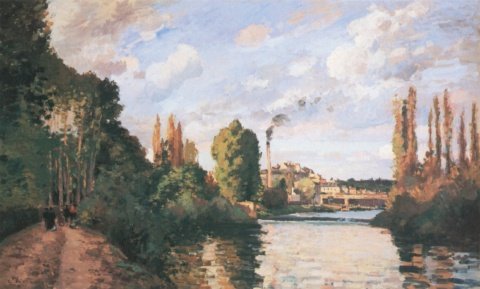The BMW Art Car Collection at the BMW Museum and headquarters in Munich
Photo courtesy of BMW AG
It all started with one man: Hervé Poulain. A French motor racing driver, auctioneer and art enthusiast, he visualized a project whereby a race car, a symbol of modern engineering, would be used as a canvas for contemporary art. He took his crazy idea to Jochen Neerpasch, director of the BMW motorsport division at the time, who gave him the green light. Poulain’s vision took shape when he convinced American artist Alexander Calder, who revolutionized sculpture with his kinetic “mobiles”, to paint a BMW 3.0 CSL. Calder’s vibrant hues and bold, dynamic forms wrapped around the sleek lines of the car, creating a striking fusion of art and automobile. The world’s first BMW Art Car was born.
Poulain explains his choice of Calder: “Because he invented the sculpture in motion. Besides, this was supposed to be a gift to the spectators of the 24 Hours of Le Mans [a legendary endurance race in northwestern France], who mainly tend to be not necessarily familiar with contemporary art. And this American artist’s oeuvre is instantly comprehensible, with its surfaces of pure primary colors—blue, red, yellow—that seem like something out of a children’s painting book. His work has an immediate effect on us, with no need for any particular artistic background knowledge.” The car debuted in 1975 at the 24 Hours of Le Mans with Poulain and two other drivers behind the wheel, not only captivating the motorsport, art and design communities, but also setting a precedent for future collaborations. Today, other car brands have followed suit, but back then it was a truly game-changing feat.
The very first BMW Art Car by Alexander Calder, BMW 3.0 CSL, 1975
Photo courtesy of BMW AG
“I saved my Art Car concept for the world’s greatest long-distance race,” Poulain recalls. “For me, the 24 Hours of Le Mans is comparable to the Olympics. And because I was aiming for the greatest possible effect, I didn’t want to enter as a private individual, but as a team driver with the infrastructure of a big company. The idea had a unique communicative value because, regardless of the outcome and the uncertainties of the race, it was relevant to all media—the sports reporters, the feuilleton and the general press at large. The performance was the cherry on top of the sundae.”
Following Calder’s pioneering work, a succession of distinguished artists have contributed to the collection, each bringing their unique vision to a BMW car. In 1976, Frank Stella applied his black-and-white grid based on oversized graph paper and geometric patterns to another BMW 3.0 CSL. The next year, Roy Lichtenstein’s comic strip-inspired design, composed of his signature Ben Day dots of the road, rising and setting sun and passing scenery through which the car is being driven, adorned a BMW 320i, capturing the movement and energy of racing. Perhaps the most iconic of the early Art Cars is the BMW M1 by Andy Warhol, who was the first to paint the bodywork himself using brushes and even his own fingers. “I attempted to show speed as a visual image,” he said. “When an automobile is really traveling fast, all the lines and colors are transformed into a blur.”
As the years passed, the BMW Art Car Collection continued to evolve, reflecting changes in the art world and advancements in automotive technology. The 1980s and 1990s saw contributions from artists like Robert Rauschenberg, who incorporated photographic transfers of classical artworks into his design, and David Hockney, who erased the outer surfaces of a BMW 850 CSi and allowed the inside of the car to be made visible. As the project took on a more global dimension, artists from diverse cultural backgrounds were invited to contribute, bringing fresh perspectives and styles. For the first BMW Art Car to be designed by a woman, South Africa’s Esther Mahlangu metamorphosed a BMW 525i through tribal patterns traditionally used by the Ndebele people for decorating their homes, mixing cultural heritage with contemporary design. In 2010, Jeff Koons added hundreds of dynamic lines to a BMW M3 GT2, creating a colorful explosion that echoed the car’s high-speed performance.
BMW Art Car #12 by Esther Mahlangu, 1991
Photo courtesy of BMW AG
“The BMW Art Car project was not conceived at the drawing board with PR and marketing colleagues elaborating on the best way to introduce the BMW brand into the arts,” states Dr. Thomas Girst, head of BMW Group Cultural Engagement. “We have been active in the arts with hundreds of engagements around the world for more than 50 years now, and most of what we do in culture doesn’t directly involve our cars. Artists working for us don’t need to endorse our brand or become a BMW ambassador. I always tell them to keep their criticality intact—and we never interfere in the creative process. Having said that, we are very much aware of the BMW Art Cars receiving a lot of attention and creating a positive image, visibility and reputation for our company. Our cultural engagements and long-term partnerships are what set us apart from the competition and other luxury brands. Our passion for arts and culture is not proclaimed, but heartfelt!”
The BMW Art Car program is not static; it continues to grow and adapt. Recent additions reflect current dialogues in contemporary art and design. For example, the 2017 contribution by Chinese artist Cao Fei employed augmented reality to create a futuristic vision whereby a storm of colors swirled above a carbon black BMW M6 GT3 race car. Blending digital and physical realms in a commentary on technology’s role in modern life and mobility, the result was a BMW Art Car for the 21st century. The most recent iteration was designed by Ethiopian-American artist, Julie Mehretu, who introduced her unique process of additive and subtractive mark-making to a BMW M Hybrid V8, which returned to race at the 24 Hours of Le Mans in 2024, after a 14-year hiatus. She says she imagined her painting “Everywhen” “inhaled and digested by the car, which then transforms the car. When I was in the studio with a one-fifth scale model of the car in front of the painting, I kept thinking about how it could drip into the car somehow. Then it became interesting to think of the painting as a portal that the vehicle would move through.”
BMW Art Car #3 by Roy Lichtenstein, BMW 320i, 1977
Photo Enes Kucevic. Courtesy of BMW AG
For its 50th anniversary this year, the BMW Art Car Collection is on a world tour across five continents, with stops at Art Basel Hong Kong, Le Mans Classic in France, Belgium’s Zoute Grand Prix, the Shanghai Motor Show in China and Italy’s Concorso d’Eleganza Villa d’Este, among others. The very first BMW Art Car by Alexander Calder and the 20th by Julie Mehretu are currently exhibited at Contemporary Istanbul, Turkey’s leading international art fair, running until September 28, 2025, while the seven BMW Art Cars that have participated in the 24 Hours of Le Mans, including those designed by Andy Warhol, Roy Lichtenstein and Frank Stella, will be united in a unique retrospective at the Rétromobile classic car show in Paris at the end of January 2026.
Today, the 20 automobiles in the BMW Art Car Collection stand as a testament to the enduring relationship between art and technology. They are exhibited in museums and galleries worldwide, allowing a broad audience to appreciate the innovative fusion of these fields. The ongoing project is a reminder of the endless possibilities when creative minds intersect with cutting-edge engineering. Bridging the gap between two seemingly disparate worlds, it gathers together some of the most illustrious artists of each era to transform BMW vehicles into mobile masterpieces.


